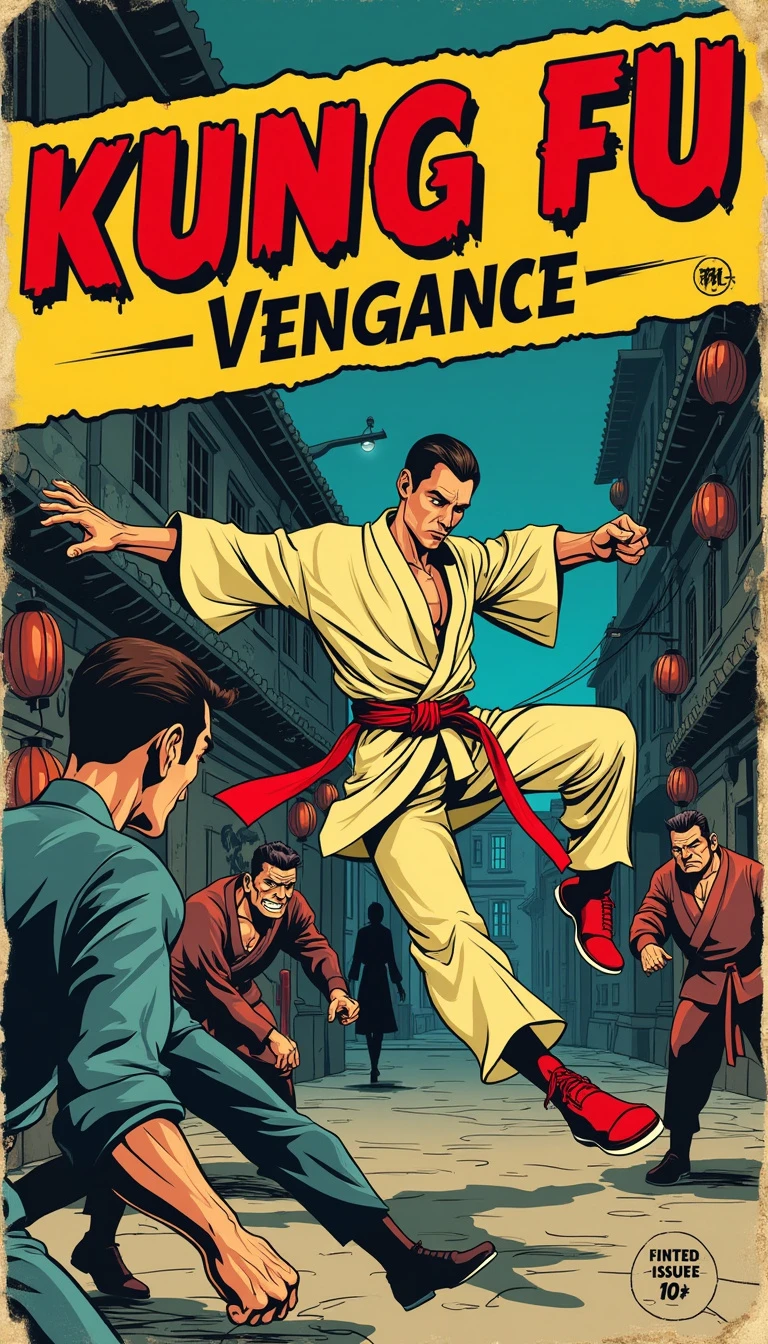The cover of *Kung Fu: Vengeance* is designed in a classic 1940s comic book style, with bold, hand- drawn illustrations and a slightly worn, aged appearance. The title is displayed prominently at the top in large, blocky letters, colored in vibrant red with jagged edges, evoking a sense of intensity and action. Below the title, a dynamic scene unfolds, capturing the essence of a high- stakes martial arts battle. At the center, a heroic kung fu master, dressed in traditional Chinese martial arts attire, is mid- air, delivering a powerful flying kick towards a group of villainous thugs. His flowing robe and sash are illustrated with sharp, clean lines, emphasizing his movement and speed. His facial expression is fierce and determined, reflecting his quest for vengeance. The background is a gritty urban alleyway, dimly lit by lanterns hanging from above. Shadows play across the scene, adding a sense of danger and mystery. On one side of the cover, a silhouette of a mysterious figure watches the fight from the shadows, hinting at a deeper plot within the comic. The colors are vivid yet slightly muted, in keeping with the printing limitations of the 1940s, and the overall design exudes a sense of pulp adventure, with a mix of action, drama, and intrigue. The bottom corner features a small circular emblem with the price (10 cents) and the issue number, further enhancing the vintage feel























